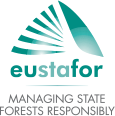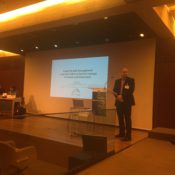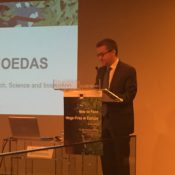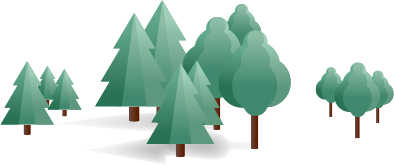How to deal with MegaFires in Europe
A workshop on forest fire risk management “Under a new wildland fire context: How to face megafires in Europe” was jointly organized by the European Commission, the Superior Institute of Agronomy in Lisbon and the Calouste Gulbenkian Foundation on 15-16 February 2018 in Lisbon (Portugal). EUSTAFOR’s Executive Director was invited to present EUSTAFOR’s views on how to manage EU forests and landscapes in the long term.
The Workshop was opened by Commissioner Carlos Moedas, who stated that forest fires are a major concern for Europe, and EU solidarity and support are active at all stages in fire prevention, during the crisis management and in the post-disaster reconstruction.
The impetus for the workshop was given by a series of wildfires which swept through several southern European countries during 2017, causing an extraordinary socioeconomic impact in terms of both loss of human lives and economic damage. According to experts such extreme wildfire events – called ‘megafires’ – originate from the cumulative effects of global warming, the expansion of fire-prone landscapes, and population shifts into and out of wildland and rural settings. Megafires most severely impact nearby communities. They also cause serious regional and global consequences on ecosystem services, energy/water/nutrient cycles, and GHG emissions.
According to experts in the field, the conventional suppression-centered wildfire and forest management strategies applied so far no longer efficiently address the phenomenon of megafires. Even though progress has been made at different levels – for example the revision of national forest programs, the development of criteria and indicators of sustainable forest management, and voluntary codes of best practice – the growing number of megafires indicates that contemporary land management strategies need to account for the disturbance regimes and ecosystem types that define these landscapes.
The workshop aimed at enhancing innovative thinking and new ideas for future approaches to forest and forest-fire management. It built upon the existing know-how, understanding and lessons learned from preventing, fighting and restoring after megafires. Key actors and partners discussed how to improve multi-level coordination and governance to better integrate forest fire management strategies. Reinforcing the dialogue between the main actors (scientists, practitioners, civil society, and policy makers) at the relevant scales (local, regional, national) and strengthening European cooperation on forest fire risk management were the main objectives of the workshop.
EUSTAFOR’s Executive Director spoke at Session II which focused on how to minimize forest fire risk while maximizing ecosystem-based forest and landscape management and the provision of ecosystem services as well as how to enhance synergies between rural development policies, risk management policies and climate change adaptation strategies in the forest and agricultural sectors to build and manage more resistant and resilient landscapes. The program of the workshop and EUSTAFOR’s presentation is available under this link (members only): https://www.eustafor.eu/?intranet=how-to-face-mega-fires-in-europe
Published 09/03/2018
Mr. Piotr Borkowski
Executive Director
- piotr.borkowski@eustafor.eu
- +32 (0) 474 989 319






